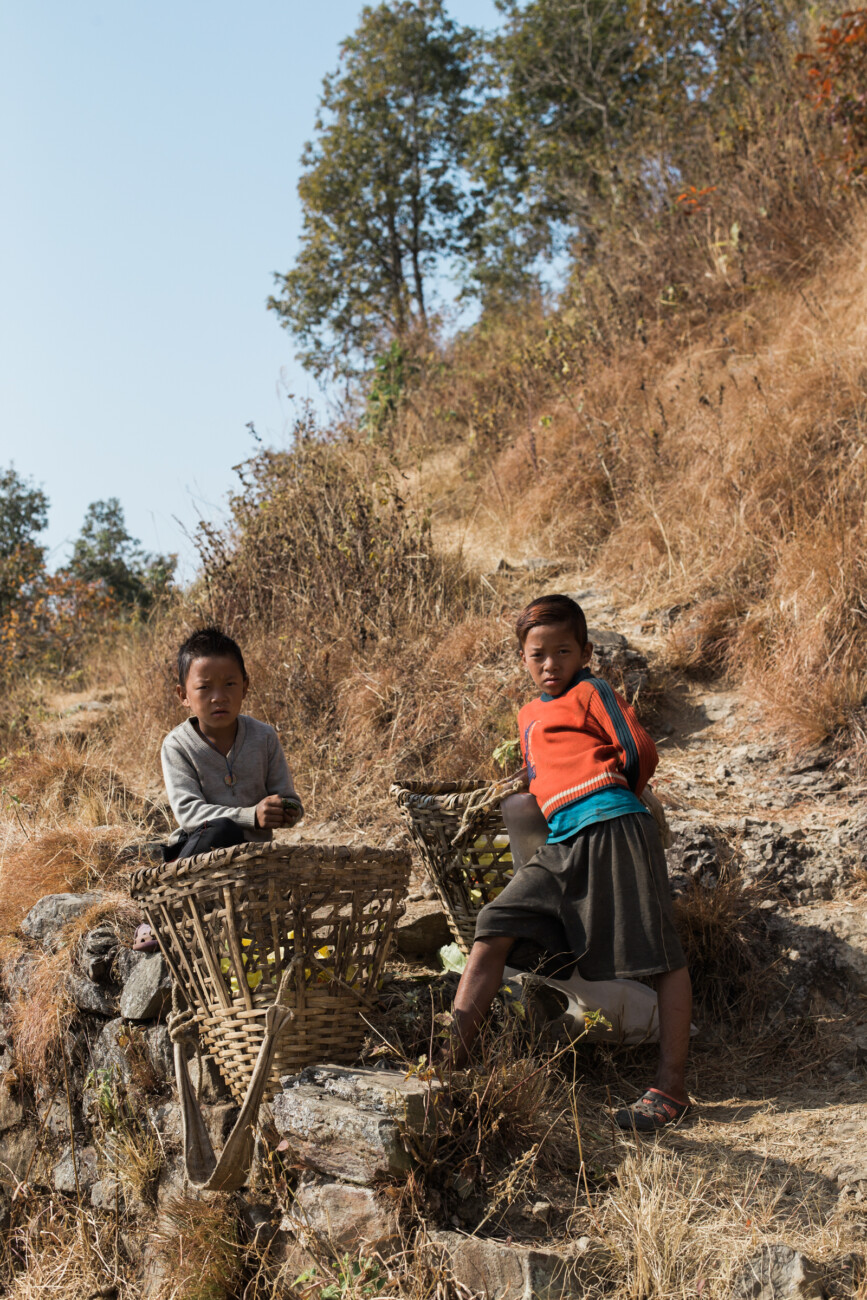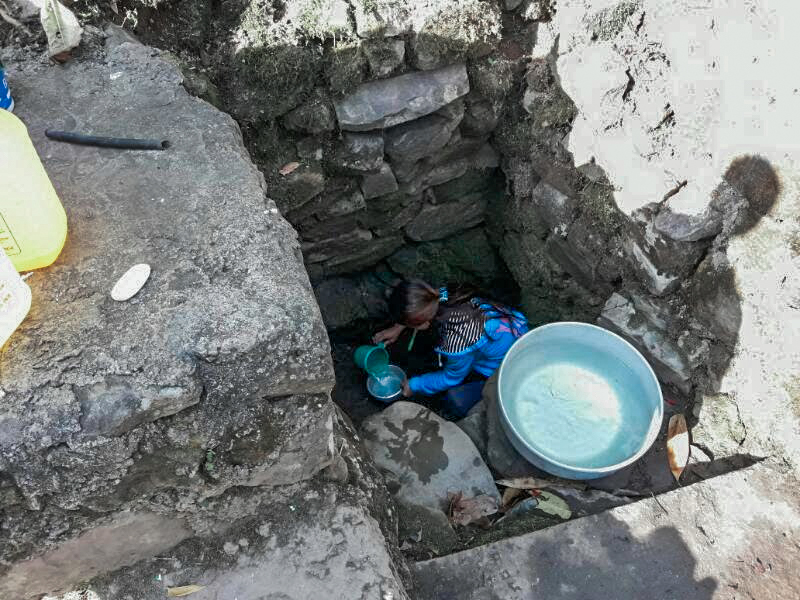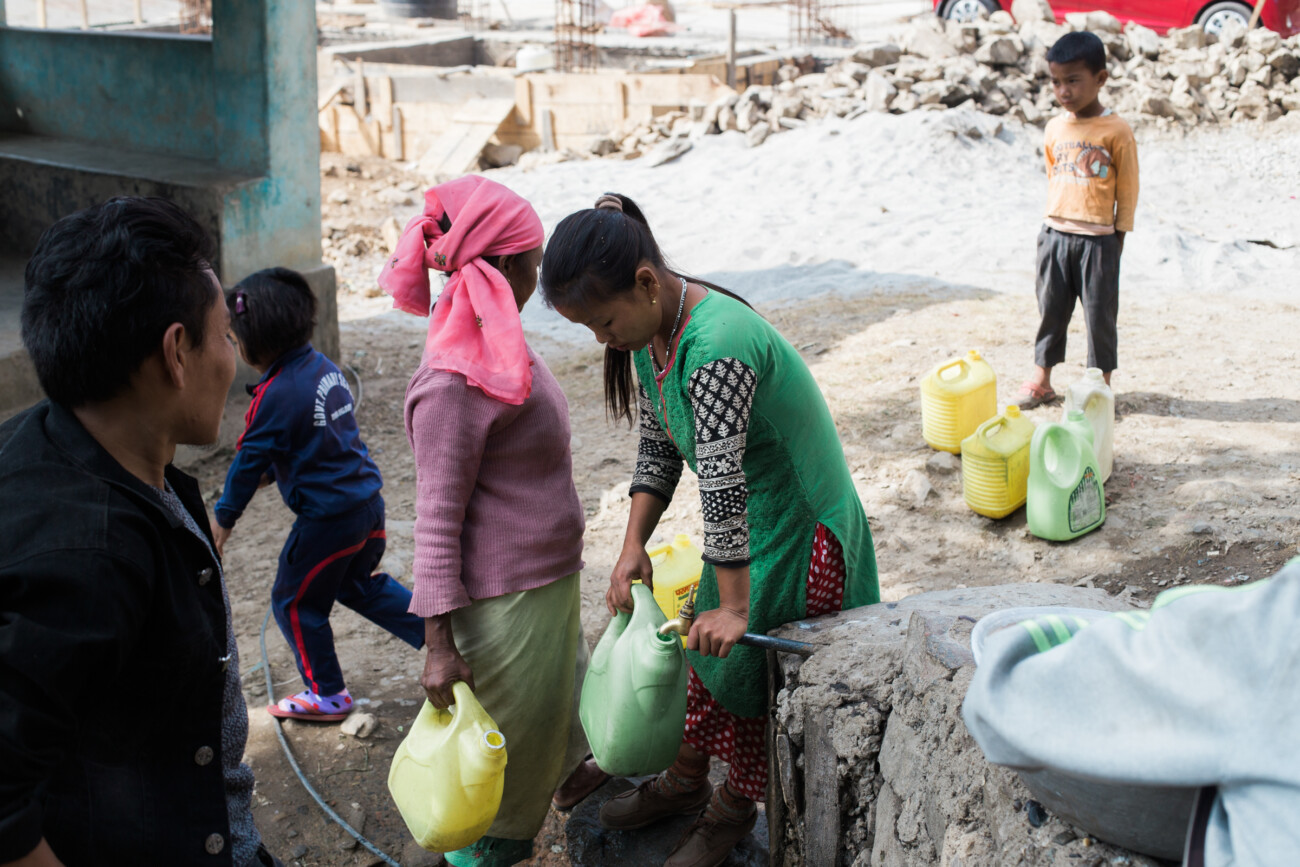We all know that climate change adversely affects the balance of the fragile ecosystem of the Himalayan region. The focus on development activities also has had unintended consequences—road building, dam construction, tunnelling, clearing land for agriculture and spread of habitat have all led to weakening the very fabric of our sustainable world. Landslides, drought and depletion of topsoil are also rendering the land unproductive. Rain patterns too have begun to change. There is almost no rain during winter months, and when it does rain the intensity is high, and falling as it does on land weakened by human activities, there is a price to pay—landslides. The inability of the land to retain the falling rain to recharge springs has had a huge impact on the depletion of ground water. Almost eighty percent of the rural population of Sikkim depends on springs or dharas as they are colloquially called. However, the springs run dry or are reduced to a mere trickle during the winter months.
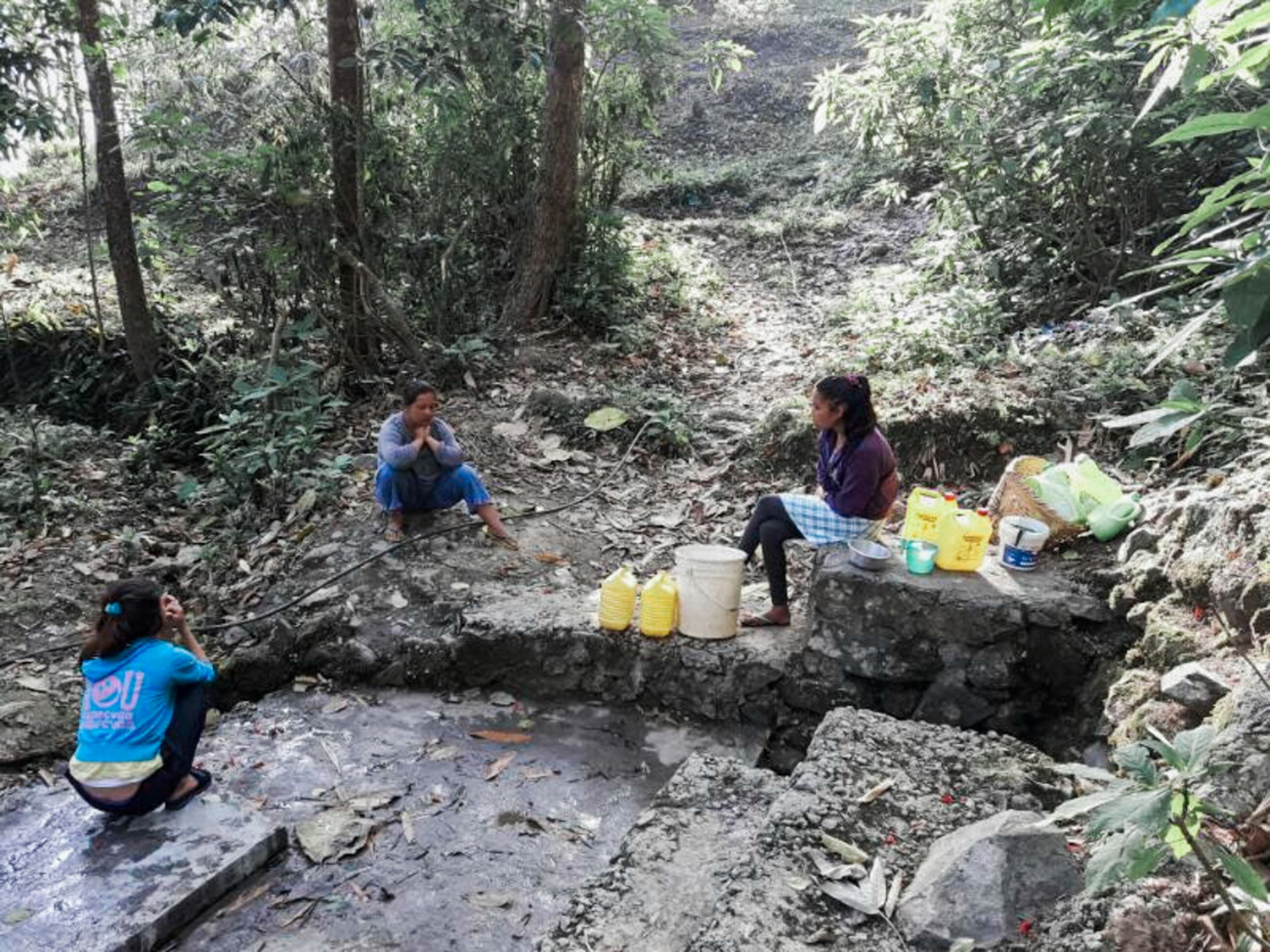
A solution needs to be found
In 2008, at a seminar organized by the World Wildlife Fund (WWF) on World Water Day, at Zilla Bhavan, Namchi, a group of women spoke about the daily drudgery of collecting water from natural springs through the dry months of March to May. Studies show that less than fifteen percent of rainwater percolates down to recharge springs, while the rest is lost as surface runoff. Dhara Vikas, or spring shed development scheme, aims to catch this runoff water to recharge groundwater sources. The Rural Management and Development Department (RMDD), Government of Sikkim, under the leadership of Sandeep Tambde, a young Indian Forest Service officer, conceptualized the Dhara Vikas initiative to revive the state’s dying lakes, springs and streams. Dhara Vikas was launched under the centrally sponsored Mahatma Gandhi National Rural Employment Guarantee Act (MGNREGA), with technical support from WWF India, People’s Science Institute, Dehradun, Advanced Centre for Water Resources Development (ACWADAM), Pune, and Arghyam, Bengaluru. Dhara Vikas began to revive and maintain the dhara by using rainwater harvesting, geohydrology and Geographical Information System (GIS) techniques. This programme was enabled by a remarkable convergence of expertise from various departments like forest, mines, and science and technology.

To implement the programme, training for the existing workforce began in 2009. In coordination with various NGOs, twenty programmes were developed, including specialised knowledge and skills in rainwater harvesting, geohydrology and spring discharge measurement. The use of Global Positioning System (GPS) and laying of contour trenches were also conducted. Recharge areas of various springs and streams were identified, based on the varying soil and rock structure, and the weathering and fracture pattern of rocks were identified. Trenches were dug and pipes laid for recharge of select lakes and springs. The villages with the most acute water shortage were selected for implementation during the initial phase in 2009. In 2010, Nagi Lake in South Sikkim was revived. By 2011, it was abundantly clear that these interventions held promises.
The key to the success of Dhara Vikas programme is the role of the local community in the process. The programme covers a wide range of interventions, such as, enhancing the hydrological contribution of hill-top forests, reviving lakes to function as recharge structures, expanding minor irrigation networks for paddy cultivation, terracing of sloping lands, enhancing water storage infrastructure, developing para-professionals in geohydrology, and carrying out research and documentation. Micro-level planning involves awareness building and discussion with communities. All work-related resolutions are taken up in the panchayats and resolved through village-level discussions. This process also demands an intense involvement of the Block Development Officers, who partner with the village communities and the technical team. Decisions related to digging of trenches and identifying recharge points are based on principles of geohydrology.
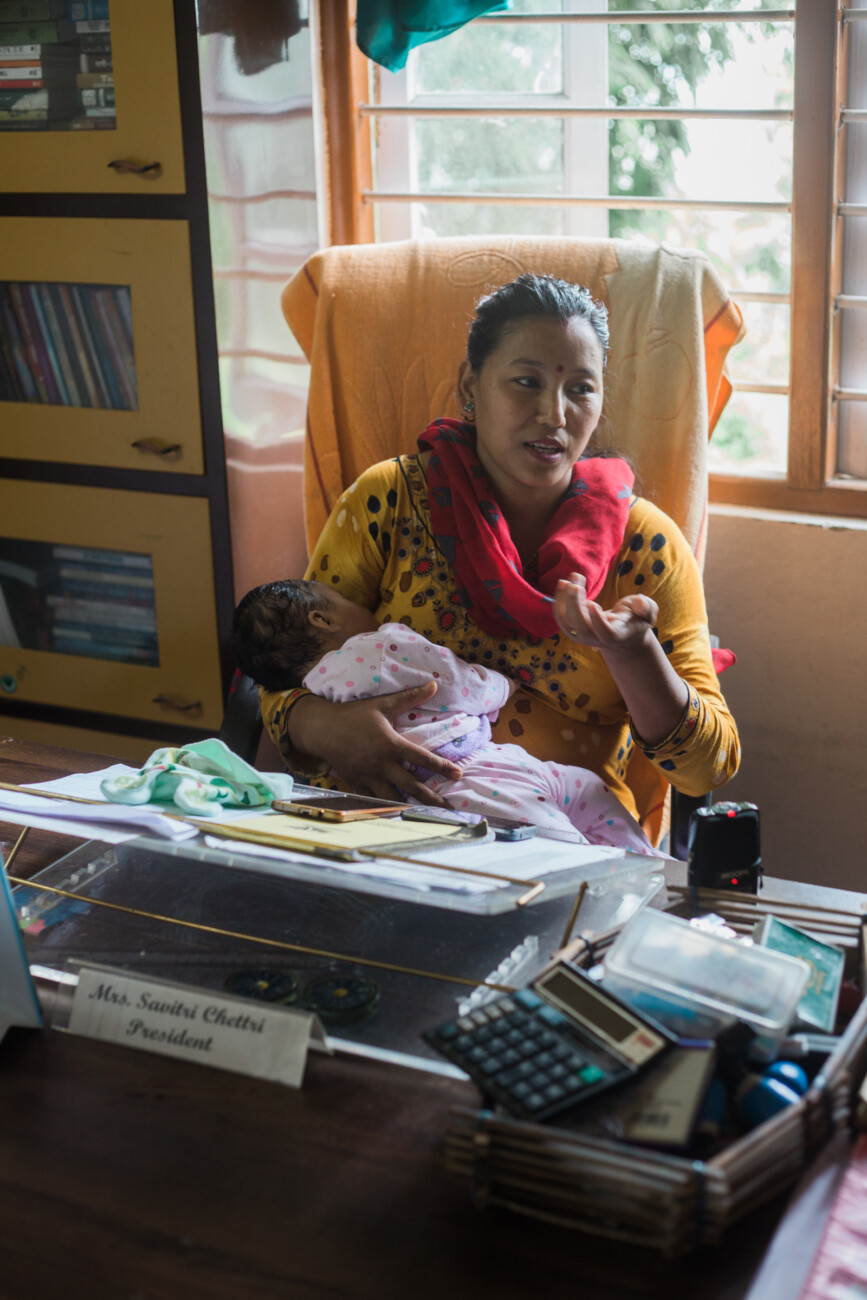

By 2013, ₹ 2.5 crore was spent on spring-shed development, covering a total area of 400 hectares and resulting in an annual groundwater recharge of 900 million litres. Fifty springs were revived, most of them in Kaluk, Rhenock, Rabong, Sumbuk, Jorethang and Namthang; five lakes, namely Dolling, Deythang, Nagi, Karthok and Datum, were revived; reforestation of seven hill-top forests took place at Simkharka, Sadam, Tendong, Maenam, Gerethang, Chakung and Sudunglakha. Before the launch of the Dhara Vikas programme, the Nagi Lake in South district had dried up, gradually killing all the springs recharged by it. The pilot project restored the lake to make it perennial again and revived springs, such as Setikhola, ensuring water security even during dry months. With the revival of lakes and springs, and the increased awareness, villagers from other areas have also approached Dhara Vikas for assistance.
Savitri remembers that when she came to Kitam in 2010 as a young bride she was horrified about the acute water scarcity in the area.
When we visited Kitam block South District, in July 2018 to meet with Savitri Chettri, a young twice-over panchayat president, and to learn about the experience of her village with Dhara Vikas, she looked satisfied with the results so far. Kitam Manpur Gram Panchayat received a national award in 2017-18 from the Ministry of Rural Development, Government of India, for ‘Outstanding Performance in Implementation of Mahatma Gandhi NREGS’.
Savitri remembers that when she came to Kitam in 2010 as a young bride she was horrified about the acute water scarcity in the area. She was not aware why this was so. It was only after she was elected to the panchayat, and also became the panchayat president in 2014, that she slowly began to learn about the root of this problem. Unfortunately, most of South Sikkim and parts of West Sikkim fall under the rain shadow and so receive less rain. She heard about the MGNREGA- supported Dhara Vikas Programme, and after some discussions with the people, decided to approach Pem Norbu, the state coordinator for the Dhara Vikas Programme.
The stipulated time for recharge is usually five years, but in Kitam, by 2017, in a matter of only two years people began to notice perceptible changes in water availability.
Pem Norbu along with his team set to work. He conducted all the necessary studies of the area, bringing into play the various experts, along with local knowledge to gather accurate information of the area, such as the location of water sources; local expertise and experience were deployed to identify recharge area of the springs based on the structure, weathering and fracture patterns of the rocks. The recharge area for Kitam was identified to be Solophok and the forest area adjoining Sempani. This was twelve kilometers away from Kitam. The work began in June 2015. Volunteers (both, men and women) from the three wards—Upper, Middle and Lower Kitam—were mobilised, both men and women. The recharge area lay beyond the motorable road but the panchayat organised to drop them off as far as the road went and picked them up after work. It took twenty days to dig 581 trenches. Each trench was carefully positioned so that when the one above overflowed the next trench would catch this overflow. The stipulated time for recharge is usually five years, but in Kitam, by 2017, in a matter of only two years people began to notice perceptible changes in water availability. During March-April water was still available.
The Dhara Vikas work was supported by building storage tanks at strategic locations so that water distribution was streamlined. The violent quarrels that used to break out over water not so long ago are a story of the past. Mani Kumar Pradhan, a barefoot engineer who has been working in this area since 1990, is in-charge of water distribution, assures us that the water available even during the dry months is fifty percent. He is in-charge of water distribution and he opens the valve from 6 a.m. to 8 a.m. every day. Most households are served with piped water now and Pradhan assures us that even during the dry months water is available to fifty percent of the households. But over the years, households have multiplied and with this the need for water has also increased.
When asked whether the acute water situation was always there, Ramesh Dhamala, a resident of Lower Kitam says, “Yes as long as we remember.” In 1990, they were given the first piped water. Even with the intervention of Dhara Vikas, there is still a need for adequate water to carry out agricultural activities. He asserts, that paddy would grow here, and so would corn, vegetables and fruits, but for the lack of adequate water.
In the course of our conversation, we inquired about the cause of disappearing springs. The unanimous answer was, “roads”. When the earth is excavated it interferes with water courses and either they disappear completely, or find another location, usually to emerge further down the hill. Earlier when a road was proposed, the elderly in the village would warn, “All sorts of unwanted people will come.” But now they say, “We need roads because if we fall ill, we can travel more easily to hospitals.”
Ultimately, communities have to find a balance and must ask themselves what is more important, water or roads?
Photo Gallery
(Click to enlarge)

